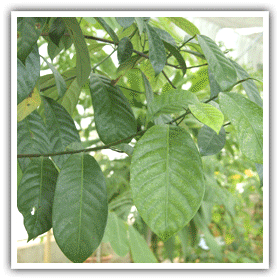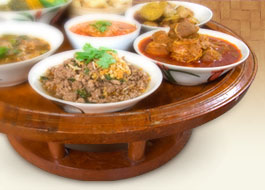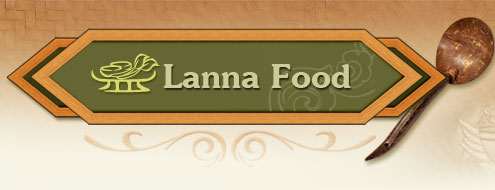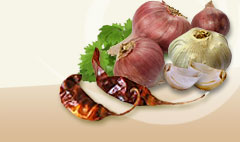Nutmeg |

|
 : Wichian Chongbunprasert. (2007) (Nutmeg tree) : Wichian Chongbunprasert. (2007) (Nutmeg tree) |
|
|
 | Myristica fragrans Houtt. Exs. |
|
| |
 | Myristicaceae |
|
| |
 | Nutmeg tree |
|
| |
 | Chan ban (Shan-Mae Hong Son) (Wut Wuthithamwet, 1997, p. 167) |
|
| |
 | Tree shrub, 30-60 ft. high, leaves simple, alternate, usually planar, thick and leathery, lance-like, 2-5 inches long. Flowers small, male and female on different trees. Calyx with 3 leathery lobes, male with stamens densely clustered into a cup shape, triangular. Fruit somewhat round, splitting into 2 sections, single large seeds with thin, orange or red coating (aril), fleshy. Black, covered with membranous mace. (Department of Agricultural Extension, Crop Promotion Division, Herbs and Spice Plants Group, 2007). |
|
| |
 |

No information on nutrition. Flowers and seeds are used in bread, butter, sausages, ham, bacon, roasted meat, kaeng masaman, curry, namphrik. The flesh can be used in food too, but it is not as popular. Indonesia is known as a big producer/grower. The fruit can be candied, dried or pickled. (Agricultural Technical Department, 2007) |

Wood: used to relieve fever, anxiety, strengthen lungs and heart and bile. Wood heart: to reduce fever, strengthen lungs, heart, liver and bile, to relieve itchiness, treat hallucinations, headache. Roots: to treat indigestion, removes gas in the system, stops nosebleeds, diarrhea, dysentery, reduces thirst, increases appetite, treats heart disease, muscle spasm. (Wichian Chongbunprasert, 2007) |
|
| |
 | Winter |
|
| |
|
|
| |
|
|




